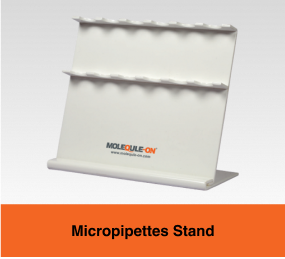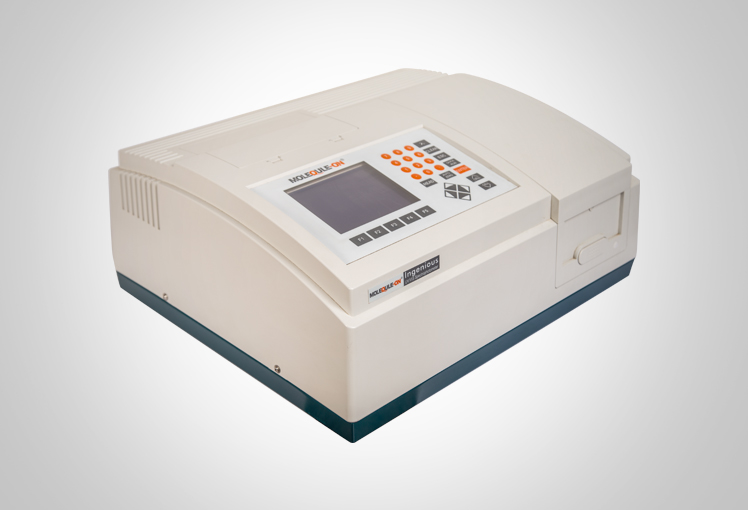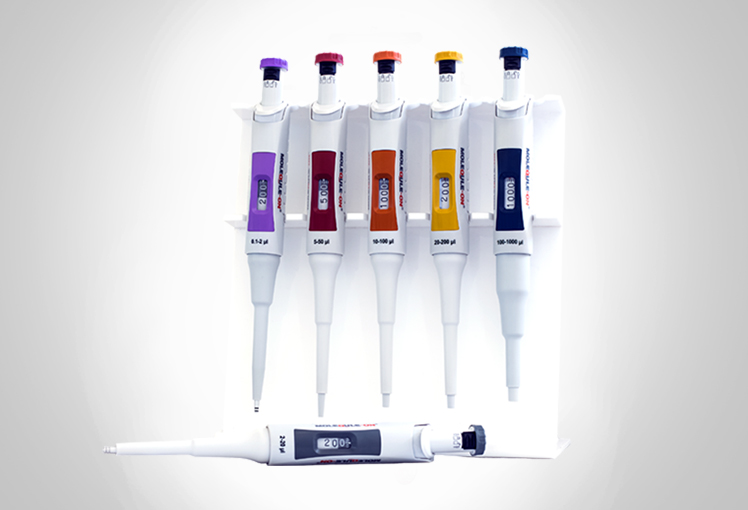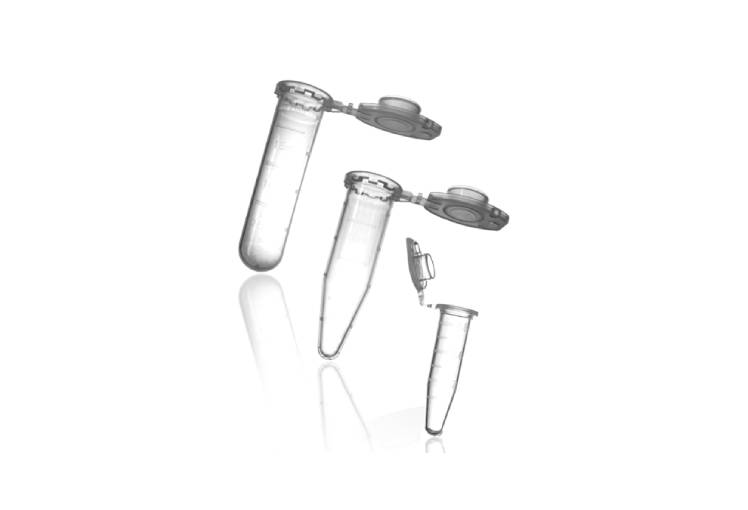MOLEQULE-ON reagents and kits are essential tool in research and various field of science, which enable accurate experiments and tests. Our products are integrated with newest technologies to meet the demand of a wide range of laboratories. The list includes PCR and qPCR reagents, electrophoresis, enzymes, nucleic acid extraction and purification kits, colorimetric and ELISA kits and buffers.
PCR reagents, dehydrated culture media and plasticware. Our company is focused on customer satisfaction striving to
gain the reputation of a reliable supplier of user-friendly laboratory tools.
-
BCA Protein Assay Kit
- MQ Bradford Reagent
- MQ Biuret Reagent
- TriEx Reagent
BCA Protein Assay Kit
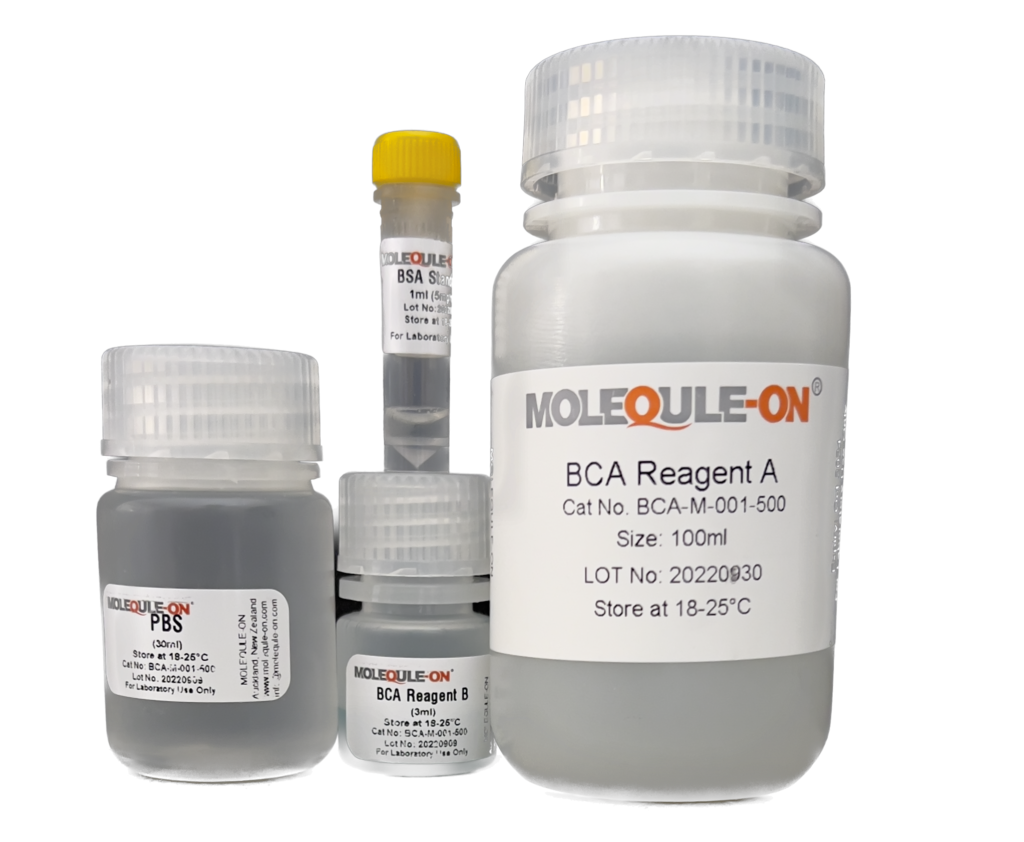
The BCA Protein Assay is a detergent-compatible formulation based on bicinchoninic acid (BCA) for the colorimetric detection and quantitation of total protein. This method combines the well-known reduction of Cu²⁺ to Cu⁺ by protein in an alkaline medium (the biuret reaction) with the highly sensitive and selective colorimetric detection of the cuprous cation using a unique reagent containing bicinchoninic acid. The purple-colored reaction product of this assay is formed by the chelation of two molecules of BCA with one cuprous ion. This water-soluble complex exhibits a strong absorbance at 562 nm that is nearly linear with increasing protein concentrations over a broad working range (20-2,000 μg/ml). The BCA method is not a true end-point method; the final color continues to develop. However, following incubation, the rate of continued color development is sufficiently slow to allow large numbers of samples to be assayed together.
MQ Bradford Reagent

The Bradford Protein Assay measures total protein concentration in a unknown protein sample. This assay works by determining the color change achieved with the basic amino acids combined with Coomassie dye, which, under acidic conditions, changes the color of the sample from brown to blue.
MQ Bradford Reagent id a ready to use mixture which does not required further mixing or dilution. The changed color can be read at 596nm within 5 minutes of incubation. Economical assay for protein concentration.
MQ Biuret Reagent
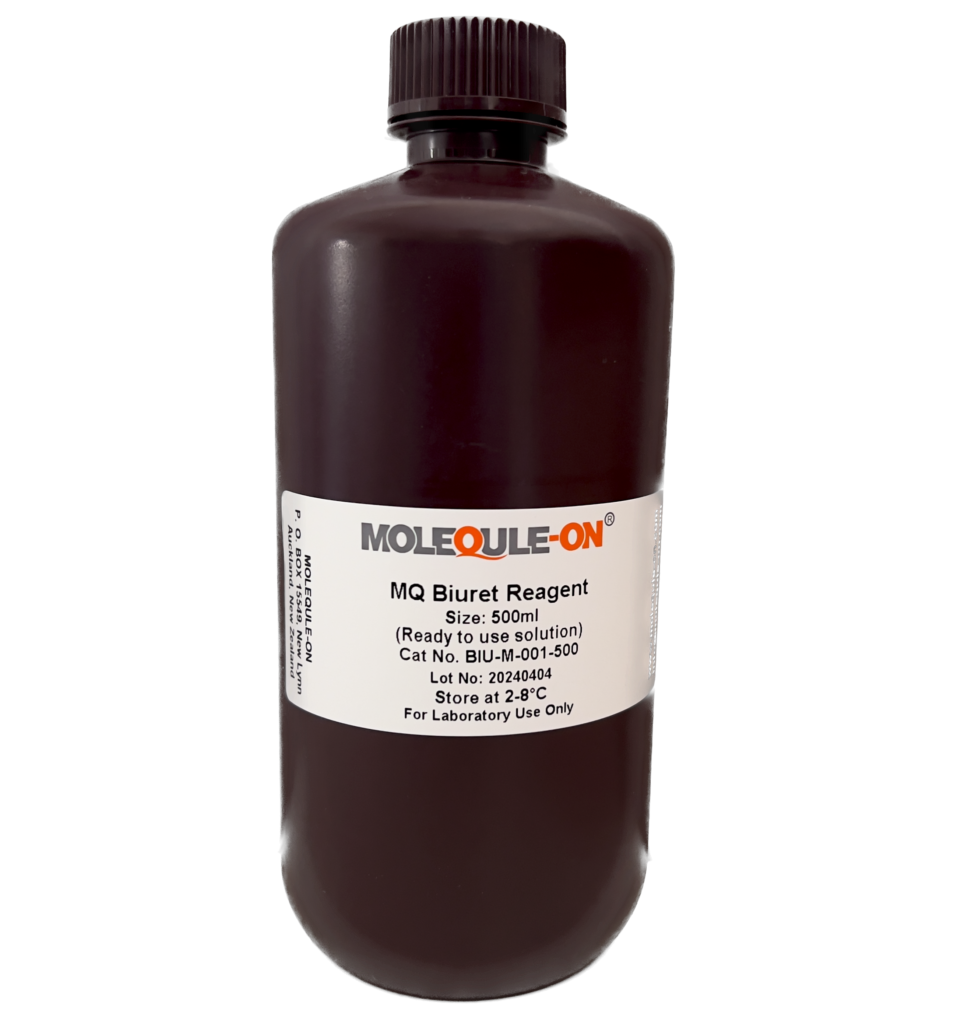
MQ Biuret Reagent is used to determine total protein in an unknown sample. The reagent reacts with peptide bonds that hold amino acids together which leads to a color change that is directly proportional to the amount of protein in the sample. Biuret is less sensitive than Bradford method and can detect protein level up to 150 - 1,000 μg/ml. The samples can be read at 540nm.
TriEx Reagent
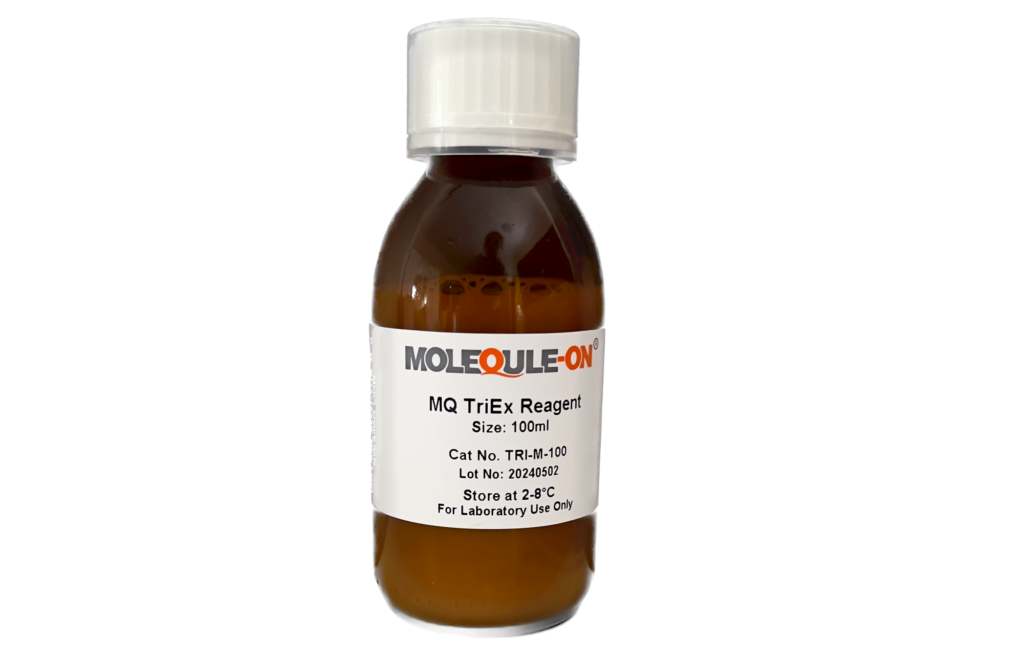
MOLEQULE-ON TRiEx Reagent is a ready-to-use reagent designed for the isolation of total RNA from cells and tissues. This reagent, a monophasic solution of phenol and guanidine isothiocyanate, improves upon the single-step RNA isolation method. During sample homogenization or lysis, TRI-EX Reagent maintains RNA integrity while disrupting cells and dissolving cell components.
Following the addition of chloroform and centrifugation, the solution separates into an aqueous phase and an organic phase, with RNA remaining exclusively in the aqueous phase. The RNA is then recovered by precipitation with isopropyl alcohol.
After the aqueous phase is removed, DNA and proteins in the sample can be recovered through sequential precipitation. DNA is obtained from the interphase by ethanol precipitation, and proteins are recovered from the organic phase by additional precipitation with isopropyl alcohol. The co-purification of DNA may be useful for normalizing RNA yields across samples.
This technique is effective with both small quantities of tissue (50-100 mg) and cells (5 × 10⁶), as well as large quantities of tissue (≥1 g) and cells (>10⁷) from human, animal, plant, or bacterial origins. The simplicity of the TRI-EX Reagent method allows for the simultaneous processing of a large number of samples, with the entire procedure being completed within one hour.
Total RNA isolated by TRI-EX Reagent is free of protein and DNA contamination, making it suitable for various applications, including Northern blot analysis, dot blot hybridization, poly(A)⁺ selection, in vitro translation, RNase protection assay, and molecular cloning. For use in polymerase chain reaction (PCR), it is recommended to treat the isolated RNA with amplification grade DNase I when the primers lie within a single exon.
Lorem ipsum dolor sit amet, consectetur adipisicing elit. Optio, neque qui velit. Magni dolorum quidem ipsam eligendi, totam, facilis laudantium cum accusamus ullam voluptatibus commodi numquam, error, est. Ea, consequatur.
Lorem ipsum dolor sit amet, consectetur adipisicing elit. Optio, neque qui velit. Magni dolorum quidem ipsam eligendi, totam, facilis laudantium cum accusamus ullam voluptatibus commodi numquam, error, est. Ea, consequatur.
Lorem ipsum dolor sit amet, consectetur adipisicing elit. Optio, neque qui velit. Magni dolorum quidem ipsam eligendi, totam, facilis laudantium cum accusamus ullam voluptatibus commodi numquam, error, est. Ea, consequatur.
Lorem ipsum dolor sit amet, consectetur adipisicing elit. Optio, neque qui velit. Magni dolorum quidem ipsam eligendi, totam, facilis laudantium cum accusamus ullam voluptatibus commodi numquam, error, est. Ea, consequatur.



